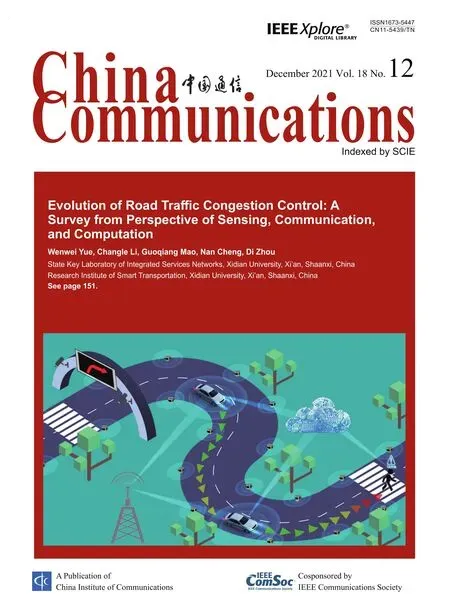Cubic Metric Reduction for Repetitive CAZAC Sequences in Frequency Domain
Yajun Zhao,Juan Liu,Saijin Xie
1 Beijing Institute of Technology,Beijing 100081,China
2 ZTE Corporation,Beijing 100029,China
3 ZTE Corporation,Beijing 100029,China
Abstract: To meet the requirements of Occupied Channel Bandwidth (OCB) of unlicensed spectrum,in NR-based Access to Unlicensed Spectrum (NRU) of 5G New Radio (NR) system, the channels of PRACH and PUCCH have to employ some frequency domain sequence repetition schemes.These repetition schemes cause serious Cubic Metric (CM) problems for these channels, although these two types of channels are composed of Constant Amplitude Zero Auto-correlation (CAZAC) sequences.Considering the properties of CAZAC sequences, which are used for PRACH and PUCCH (refer to PUCCH format 0 and format 1)in 5G NR system,in this paper,we propose some new schemes of CM reduction for these two channels taking into account the design principles to ensure the sequence performance of the autocorrelation and cross-correlation.Then the recommended CM reduction schemes are evaluated and the optimized parameters are further provided considering both CM performance and the complexity.
Keywords: 5G; OFDM; cubic metric; NR-U; occupied channel bandwidth; CAZAC; zadoff-chu sequence
I.INTRODUCTION
Since its launch in 2017,5G NR standard development has undergone two releases, Rel-15 and Rel-16 [1].The specifications are expected to be completed in the first quarter of 2020.By introducing NR-based Access to Unlicensed Spectrum(NR-U)feature, 5G NR system will have more available spectrum resources and the problem of insufficient spectrum resources can be alleviated,especially for vertical industry operators without licensed spectrum resources.However, compared with the licensed spectrum, the application of the unlicensed spectrum has to abide by a variety of additional rules, such as Listen Before Talk (LBT),Occupied Channel Bandwidth (OCB), Transmission Power Control(TPC),etc.[2].Therefore,the designs of 5G NR for licensed spectrum can not be directly applied to NR-U system,and some enhancements are needed.
For the uplink channels of OFDM system, considering the cost and power limitation of UE, the lower Cubic Metric (CM) properties are the basic requirement.Therefore, two kinds of Constant Amplitude Zero Auto-correlation (CAZAC) sequences with appropriate CM properties are used in the PRACH and PUCCH (refer to PUCCH format 0 and format 1) of 5G NR system[3].The existing PRACH and PUCCH are intended for licensed spectrum, and the sequence length adopted by them can not satisfy the requirements of OCB.To meet the OCB rules, some frequency domain sequence repetition schemes are introduced into NR-U.However, the simple repetition schemes of these two types of CAZAC sequences cause serious CM issues.
In this paper, we will discuss the CM issues of the two types of CAZAC sequence-based uplink channels,PRACH and PUCCH, due to applying the sequence repetition schemes in frequency domain for satisfying the requirements of OCB.The OCB should be between 80 and 100 percent of the Nominal Channel Bandwidth[2].
The main innovations of this paper include: (1)the several principles are provided for the design of the CM reduction mechanisms for two CAZAC sequencebased channels, including PRACH and PUCCH in NR-U; (2) based on the above design principles,through performance evaluation and complexity analysis, the mechanisms of simply and effectively suppressing CM for PRACH and PUCCH are designed respectively.
The rest of this article is arranged as follows.Section II reviews several key concepts that will employ in this article.In Section III,CM problems of PRACH and PUCCH in NR-U are analyzed.The description of the recommended schemes is presented in Section IV.Section V shows the simulation results for comparing our recommended schemes.In Section VI,the schemes are deeply analyzed and discussed based on the simulation results.Finally,we conclude this paper in Section VII.
II.REVIEW OF KEY CONCEPTS
In this section, several important technical concepts involved in this paper will be reviewed, including CM,classical schemes of CM reduction, CAZAC sequence, PUCCH and PRACH of 5G NR for licensed spectrum.
2.1 Cubic Metric
An appropriate metric,referred to as CM,is adopted in wireless communication systems and is considered to be a more accurate metric than Peak to Average Power Ratio (PAPR).The CM is based on the energy of the third-order signal which appears at the output of the power amplifier and is the main source of the nonlinear distortion.For an OFDM signalv(t),the CM(dB)is defined as

Where,the Raw Cubic Metric(RCM)is defined as

where,RCMref,dBandKare measured from hardware measurements.In this paper, the values of them areRCMref,dB= 1.52,K= 1.56 [4].The Root Mean Square (RMS) of a OFDM signal,rms[v(t)], over a sufficiently long periodT ⊂RisIt notes that CM and RCM are scalars obtained from the whole signal.In contrast,the reduction algorithms typically operate on individual OFDM symbol.
2.2 Review on the Methods of CM Reduction
Many CM reduction methods have been put forward, which are mainly in two main categories:(1)distortion-based techniques and(2)distortionlessbased techniques.The distortion-based CM reduction schemes are achieved by means of clipping and filtering in the time-domain[5–7], which is a nonlinear signal processing process and causes in-band and outof-band noise.While,the distortionless-based CM reduction schemes are designed based on applying information redundancy, e.g.partial transmit sequence(PTS) [8–11], selected mapping (SLM) [12, 13], and the block coding [14, 15].The associated drawbacks of distortionless-based schemes are the fact that it will lose some degrees of freedom and increase the complexity.
2.3 CAZAC Sequence
CAZAC sequence is one type of poly-phase codes.It is commonly used in channel estimation and time synchronization, since it has good periodic correlation properties,such as constant amplitude,zero autocorrelation, and good cross-correlation.The commonly used CAZAC sequences include Zadoff-Chu sequences (ZC), chirp sequences, and Golomb polyphase sequences.In addition to the CAZAC sequences of poly-phase codes, another kind of sequence with CAZAC properties is Computer Generated Sequences(CGS).These two types of CAZAC sequences are involved in this paper.In 5G NR,the ZC sequences are used for PRACH, while the CGS sequences are applied for PUCCH including PUCCH format 0/1.
ZC sequence is a well-known CAZAC sequence and is defined as[16],

whereris an integer,Lis the length of the CAZAC sequence,k=0,1,...,L −1.A set of ZC codes is composed ofL −1 sequences ifLis a prime number.ZC code has a good periodic auto-correlation and low constant magnitude periodic cross-correlation property.
2.4 PUCCH
For PUCCH format 0/1, to maintain lower CM value and better detection performance,sequences are properly selected to carry different information bits.A different structure where the information bit(s)selects the sequence to transmit is used.The sequence is generated by different cyclic shifts of the same underlying length-12 base sequence, which is the CGS as previously mentioned.
2.5 PRACH
The RRACH preamblesxu,v(n)in 5G NR system[3],wherer=−1 andL=LRAin Eq.(3),

The frequency-domain representation is generated according to

where,Cvis the cyclic shift of a logical root sequence,uis the sequence number,LRA=139 is the sequence length of the PRACH.
III.CM PROBLEMS OF PRACH AND PUCCH IN NR-U
The simple repetition schemes of the two types of CAZAC sequences will lead to higher CM value.In this section, CM issues of PRACH and PUCCH for NR-U will be discussed in detail.
3.1 CM Problems of PRACH with Simple Repetition in Frequency Domain
In the earlier version of 5G NR system, PRACH was designed for the licensed carrier and is composed of ZC sequences with length 139,which is continuously mapped in frequency domain.The size of the subcarrier spacing (SCS) of OFDM symbol for PRACH includes two cases,15 KHz and 30 KHz.For 15 KHz SCS,the frequency bandwidth occupied by one repetition of PRACH sequence is 139 resource elements(Note, the frequency bandwidth of 139 resource elements equal to 2.084MHz), which is much smaller than the OCB, namelyOCB ≥20MHz ∗80% (for the unlicensed spectrum on frequency band of 5 GHz).Regarding 30 KHz SCS,the frequency bandwidth occupied by one copy of PRACH sequence is two times of the case of 15 KHz SCS, that is 4.17 MHz, which is also far from satisfying OCB requirements.To meet OCB requirements,a natural way is to repeat the PRACH sequence for some times in frequency domain[17,18](refer to Figure 1).
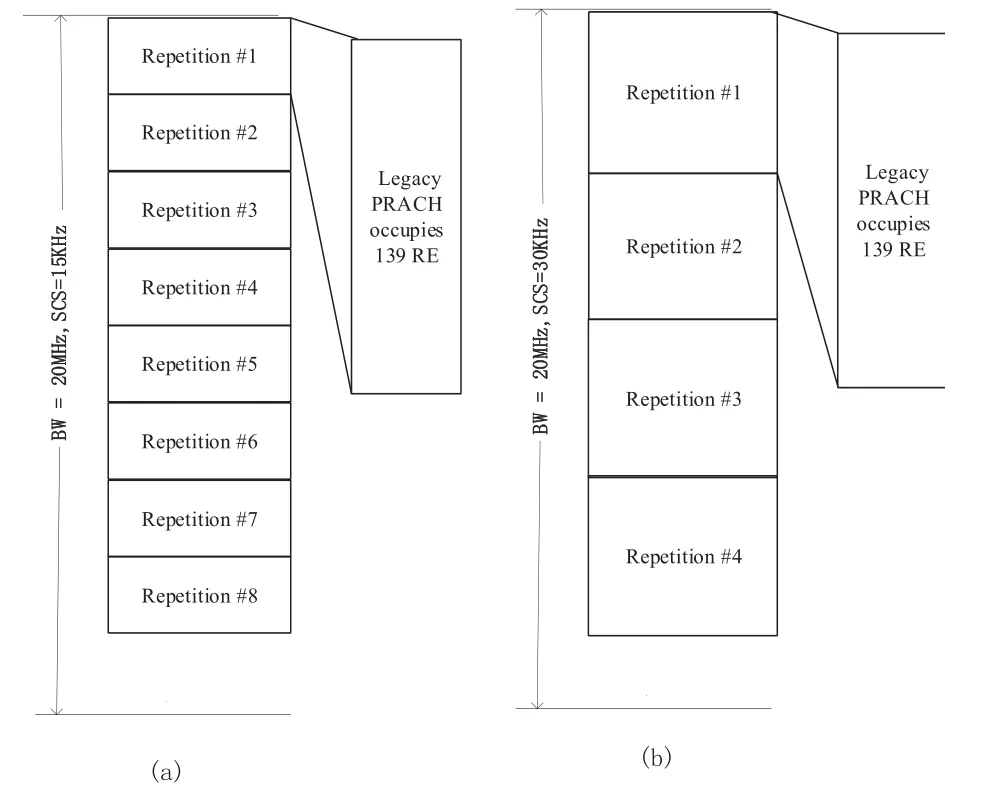
Figure 1. Frequency mapping method for 15/30kHz SCS of simple repetition schemes of PRACH.
If we only adopt the simple sequence repetition,however, CM performance will be seriously deteriorated.The reason is that the same modulation symbols occur simultaneously in different frequency locations and the superposition of the same phase causes the serious CM issues.
The Figure 2 shows that the CM value of PRACH with simple repetition directly is much higher than the CM value of the legacy PRACH sequence.CM values of the simple repetition by 8 and 4 times are higher than the legacy case by 6.2dB and 2.3dB respectively.
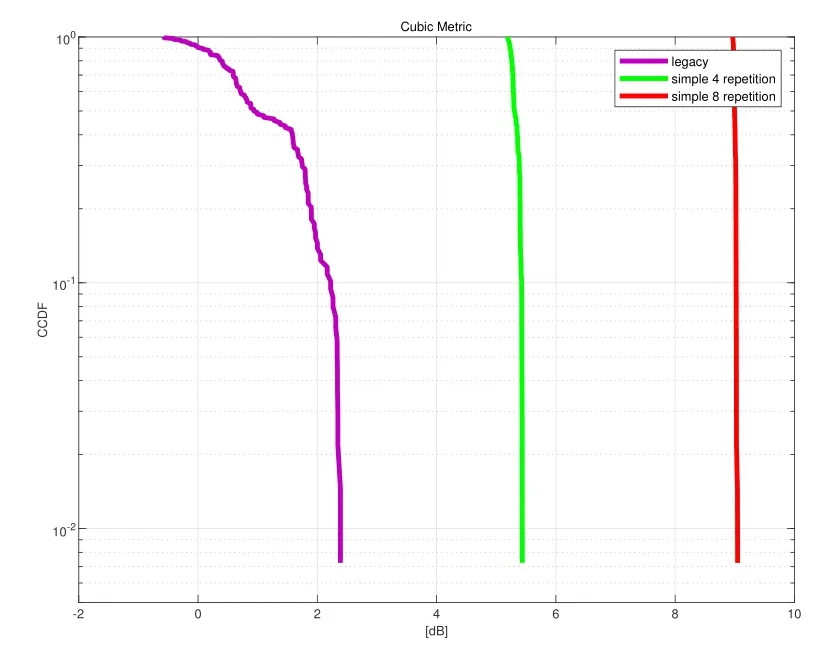
Figure 2. CM performance of legacy PRACH and PRACH with simple repetition in frequency domain.
3.2 CM Problem of PUCCH with Simple Repetition in Frequency Domain
PUCCH(refer to PUCCH format 0 and format 1)designed for the licensed carrier is comprised of the CGS with a length of 12, which are 12 consecutive REs.Same as PRACH, the SCS of PUCCH also involves 15KHz and 30kHz, and the frequency bandwidth occupies 180KHz and 360KHz respectively.The bandwidths are far smaller than the OCB requirements of unlicensed spectrum,namelyOCB ≥20MHz∗80%,that are 16MHz to 20MHz (for the unlicensed spectrum of 5GHz frequency band).In NR-U of 5G NR,an interlace structure with Physical Resource Block(PRB) granularity is proposed for PUCCH resource mapping.The multiple repetition copies of PUCCH sequence occupy all or part of RBs of the interlace structure and each repetition copy of PUCCH sequence occupies one PRB respectively.Thereby, the total frequency bandwidth occupied by these repetition copies of PUCCH sequence can satisfy OCB rule.It should be noted that the PRB number of one interlace is 10 or 11(refer to Figure 3).
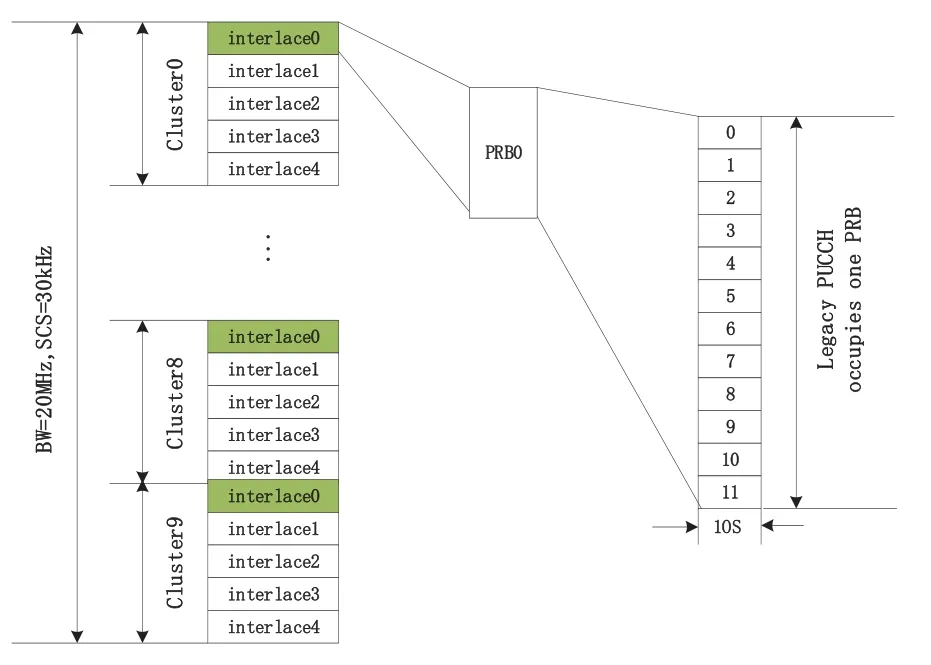
Figure 3. Interlace structure for PUCCH.
Same as PRACH,if only a simple repetition method is applied, CM value of NR-U PUCCH will be very high (refer to Figure 4).It can also be inferred that the main reason is the same modulation symbols are mapped in different frequency locations, and the superposition of the same phase brings high CM value,which will reduce the performance of PUCCH, and then the coverage of PUCCH.
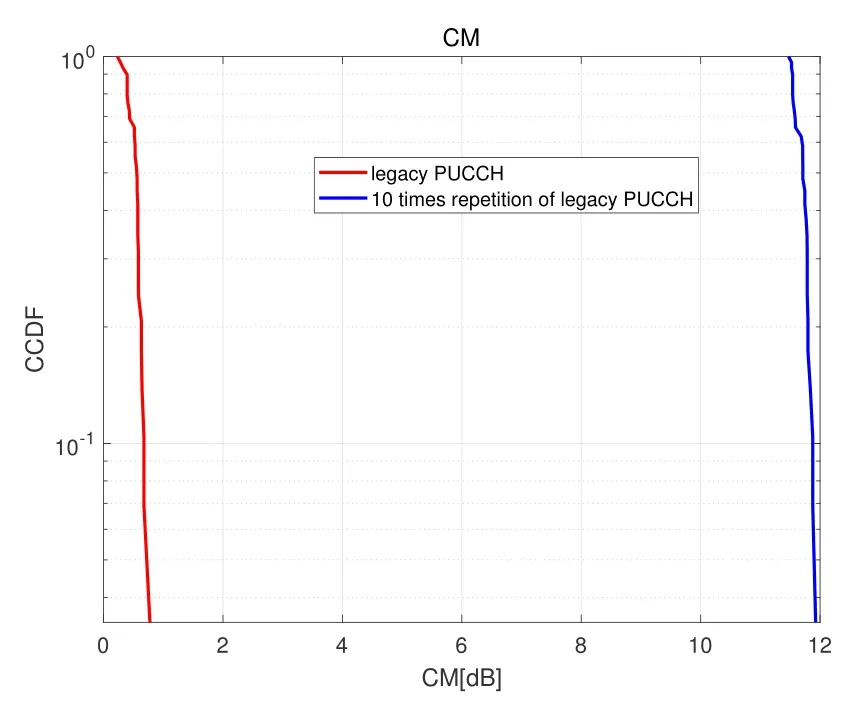
Figure 4. CM performance of legacy PUCCH and PUCCH with simple repetition in frequency domain.
From the above discussion,we can see that the CM values of PRACH and PUCCH with simple frequency domain repetition scheme for NR-U are very high compared with legacy PRACH sequences.It is necessary to design some appropriate CM reduction mechanisms for these two channels composed of the CAZAC sequences with multiple frequency domain repetitions.
IV.PROPOSED NEW SCHEMES
In this section, several recommended schemes to reduce CM for PRACH and PUCCH with multiple repetitions in frequency domain for NR-U are discussed in details.
As stated in [18], CM value will be increased if the sequence is repeated in frequency domain, and some potential schemes should be studied to reduce the CM.As indicated in [19], different phase rotations can be used to the signal repetitions in frequency domain, which is an SLM type mechanism.Based on this idea of phase rotation, we provide some enhanced schemes to decrease CM while ensuring the CAZAC sequence properties of auto-correlation and cross-correlation, which can be classified as a type of distortionless-based CM reduction mechanisms.These new schemes are design for reducing CM value of the CAZAC sequence repeated in frequency domain, while the scheme, Zadoff-Chu Matrix Transform Precoding, proposed in [20] is for the general data signals in OFDM system.
4.1 Design Principles
Unlike conventional signals, some design principles need to be considered in the design of the CM reduction schemes for the CAZAC sequence type signals.When using the CM reduction schemes for these types of signals, the auto-correlation and cross-correlation characteristics of the sequences should be preserved to ensure the performances of the timing estimation and the false alarm/miss detection probability of channels based on this sequence.
To meet these design principles,it is obvious that a distortion-based CM reduction scheme is not very suitable,and a distortionless-based CM reduction scheme is a better choice.
Moreover, the designed schemes can not violate OCB rules in NR-U.For example,when a CM reduction scheme is adopted,the occupied bandwidth by the actual transmitting signals should comply with OCB.
4.2 CM Reduction Schemes for CAZAC Sequence Based PUCCH
According to the previous explanation, the length of PUCCH has to be extended to accommodate the occupied bandwidth to meet OCB requirements in NRU.Since the PUSCH of NR-U has adopted the interleaving structure with RB granularity,in order to align with its resource mapping relationship,the PUCCH of NR-U also needs to use the same interleaving structure for mapping resources.To the interlace structure, the sequence length of NR-U PUCCH should be extended from 12 to 120 or 132.As mentioned above, CM value is very high using directly repeating the length-12 PUCCH sequence by 10 or 11 times.A scheme of“Repetition of the length-12 legacy PUCCH sequence in each PRB of an interlace with a scheme to control PAPR/CM”can be applied to solve the CM issues.The scheme can be further divided into two methods:
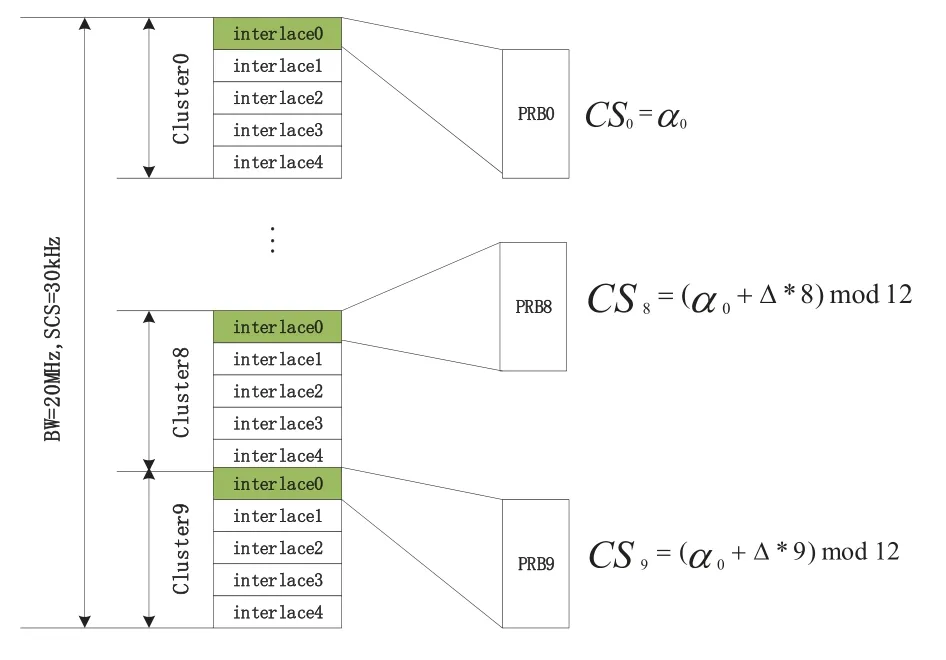
Figure 5. Enhanced PUCCH using Alt-a.
Alt-a,Cycling of cyclic shifts across PRBs;
Alt-b, Phase rotation across PRBs of an interlace where the phase rotation can be per RE or per PRB.
For Alt-a, each PRB needs to be multiplied by a weighting factor in its cyclic shift.And the cyclic shift is operated to each symbol in the PRB.The symbol sequence for the n-th PRB is denoted by

Regarding Alt-b, the phase rotation for each PRB needs to be determined.The phase is operated to the length-12 sequence of each PRB, the 12 symbols in one PRB using a same phase.Reviewing Alt-a, the cyclic shift can also be seen as a phase rotation.The symbol sequence for the n-th PRB is denoted by

In formulas(6)and(7),Sis the base sequence with length of 12,andS=(s0,s1,s2,...,s11).
4.3 CM Reduction Schemes for CAZAC Sequence Based PRACH
The NR-U bandwidth is 20 MHz in 5 GHz band.If the SCS of PRACH is 15KHz, 8 times of repetition can meet OCB rule;while,for 30KHz SCS,the 4 times of repetition is enough.

Figure 6. Enhanced PUCCH using Alt-b.
We traverse the phase rotation combinations with each entry selected in 4 or 8 phases uniformly distributed in(−π,π],and the optimal phase combination can be searched by a greedy algorithm.
4.3.1 For the 4 Times of Repetition with Phase Rotation
The phases sets for the 4 consecutive copies of the sequence are
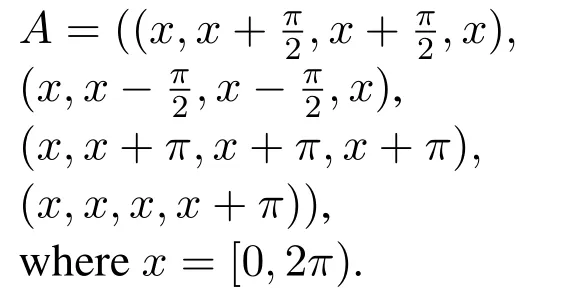
4.3.2 For the 8 Times of Repetition with Phase Rotation
The phases for the 8 consecutive copies of the sequence are

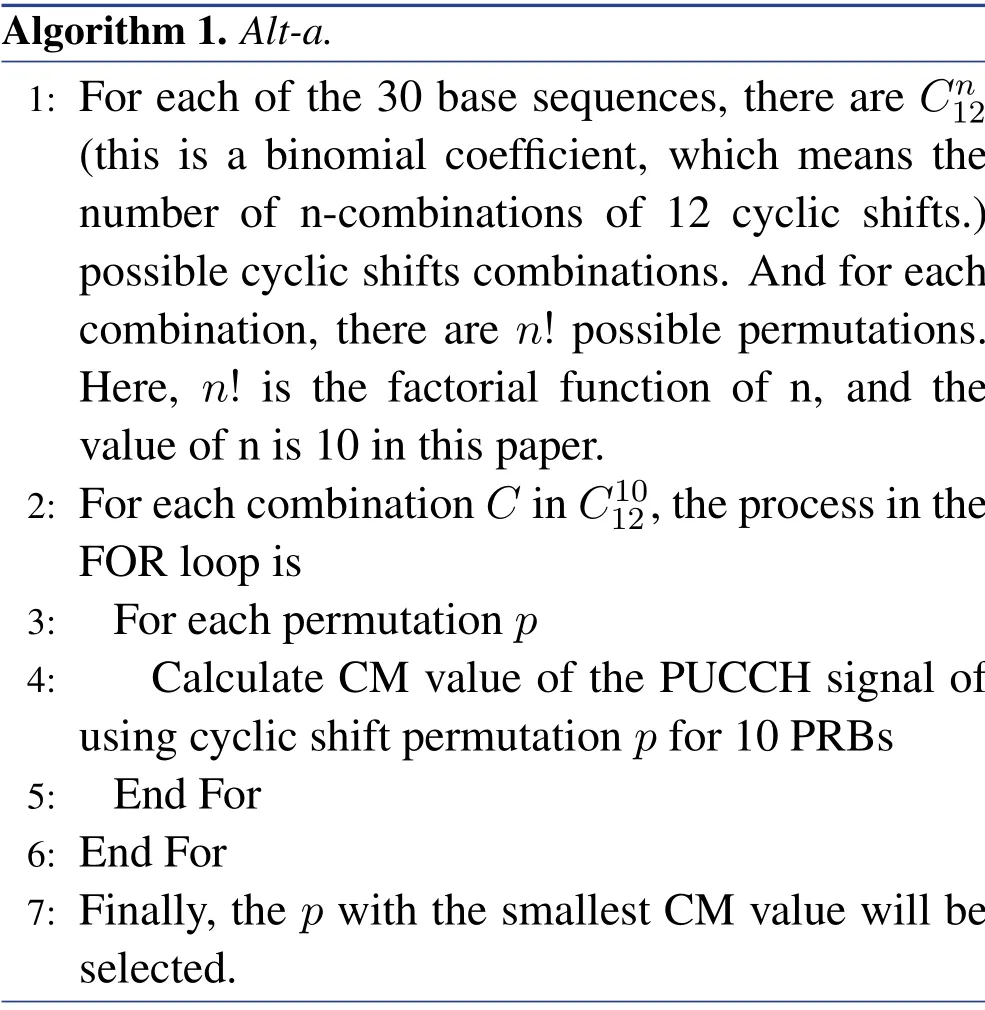
Algorithm 1. Alt-a.1: For each of the 30 base sequences, there are Cn12(this is a binomial coefficient, which means the number of n-combinations of 12 cyclic shifts.)possible cyclic shifts combinations.And for each combination, there are n! possible permutations.Here, n! is the factorial function of n, and the value of n is 10 in this paper.2: For each combination C in C1012,the process in the FOR loop is 3: For each permutation p 4: Calculate CM value of the PUCCH signal of using cyclic shift permutation p for 10 PRBs 5: End For 6: End For 7: Finally, the p with the smallest CM value will be selected.
V.PERFORMANCE EVALUATI ON
In this section,the performance simulations of the proposed CM reduction schemes for two NR-U channels of PRACH and PUCCH are provided.
5.1 Simulation Results of CM Reduction Schemes for PUCCH
In simulations for PUCCH, we take the sequence of length-120 as an example.The 120-long sequence is mapped on 10 RBs of one OFDM symbol in the frequency domain.For Alt-a,each base sequence has its own optimum cyclic shifts permutation with 10 cyclic shifts for 10 PRBs.We can use an exhaustion method to search all possible permutations of 10 cyclic shifts from 12 cyclic shifts for 10 PRBs for 30 base sequences.Regarding Alt-b, we evaluate the candidate phases with numbers ofP= [2,10] for each PRB in an interlace respectively.The implementation procedure of Alt-a(refer to Algorithm 1)and Alt-b(refer to Algorithm 2)are given as the following.
The simulation results include the CM performance and detection performance of different schemes for PUCCH of NR-U in Figure 7 and 8.
Figure 7 shows that CM value of the phase rotation with 10 candidate phases is the smallest, and the CM performance is slightly better than the Alt-a.
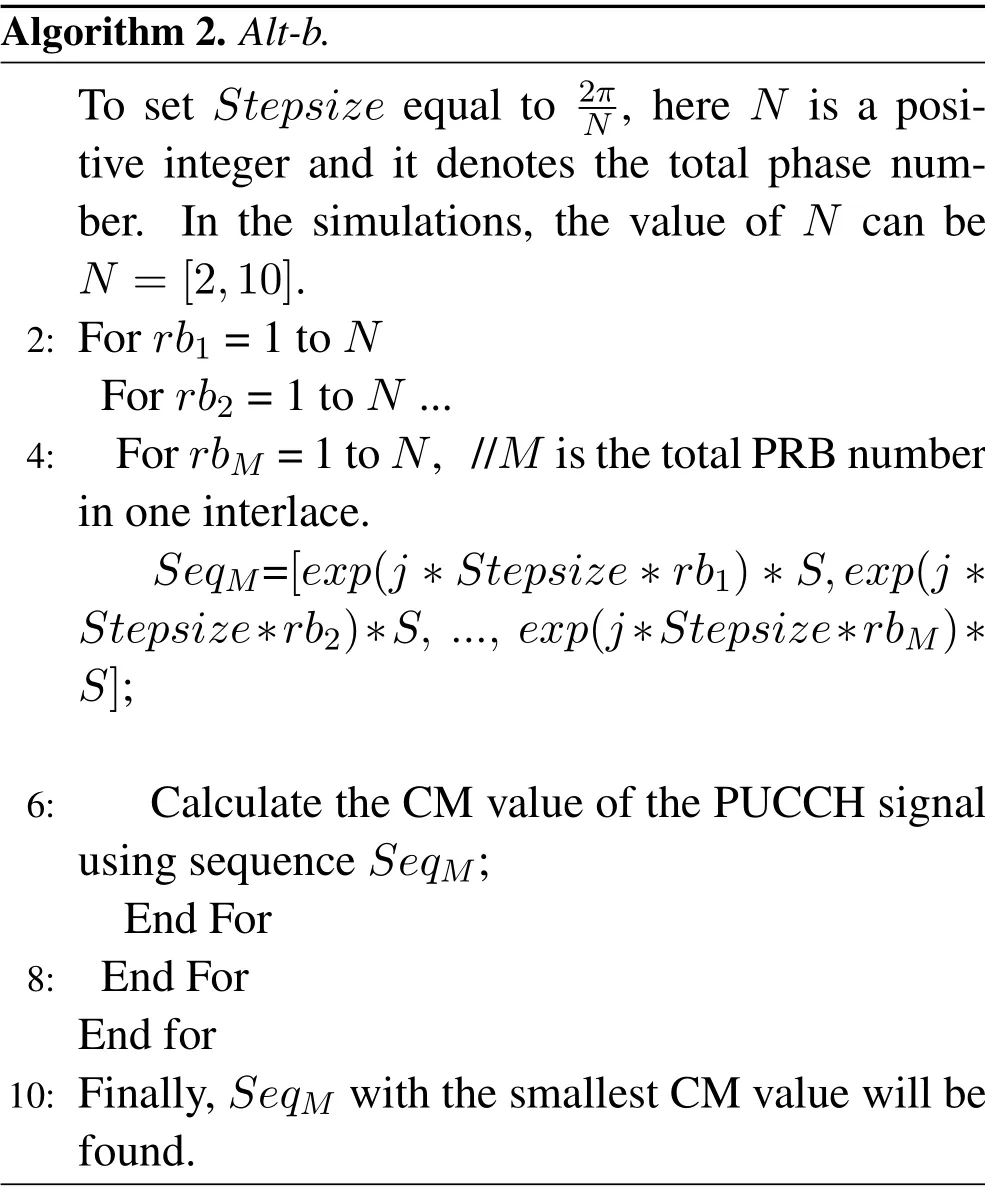
Algorithm 2. Alt-b.To set Stepsize equal to 2πN, here N is a positive integer and it denotes the total phase number.In the simulations, the value of N can be N =[2,10].2: For rb1=1 to N For rb2=1 to N ...4: For rbM =1 to N, //M is the total PRB number in one interlace.SeqM=[exp(j ∗Stepsize ∗rb1)∗S,exp(j ∗Stepsize∗rb2)∗S, ..., exp(j∗Stepsize∗rbM)∗S];6: Calculate the CM value of the PUCCH signal using sequence SeqM;End For 8: End For End for 10: Finally,SeqM with the smallest CM value will be found.
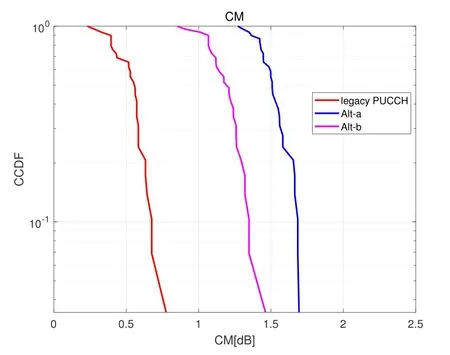
Figure 7. CM for different alternatives.
Since the correlation of the enhanced NR-U PUCCH format 0/1 with these two alternatives does not change, the detection performance of them are almost the same.Figure 8 shows the detection performances of all the alternatives, including the probability of (ACK to NACK/DTX) and the probability of (NACK to ACK).The performance of the legacy PUCCH with length-12 sequence are also provided as a reference.In the simulation, the channel model is TDL-C 100ns,the carrier frequency is 5 GHz,and the antenna configuration is 1Tx2Rx.
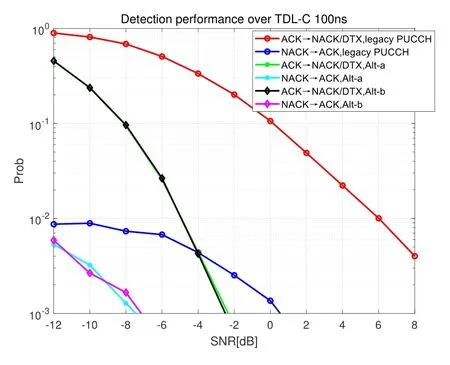
Figure 8. Detection performance for different alternatives.
5.2 Simulation Results of CM Reduction Schemes for PRACH
In the PRACH simulations, we evaluate the CM performance taking the sequences with length-139*4 and 139*8 (i.e., length-139 sequence with repetition by 4 or 8 times),and the phase rotation between repetitions.For example,the 1thelement in the 1threpetition has a phase rotation relationshipδrelative to the 1thelement in the 2ndrepetition,and then any element of the 1threpetition and the corresponding element in the 2ndrepetition have a phase rotation relationshipδ.In other words,there is a phase rotation relationshipδbetween the same elements of different repetitions.
The implementation procedure of the searching the optimized phase rotation with low CM for PRACH is as follows(refer to Algorithm 3).
The simulation results include CM performance,miss detection probability,false alarm probability,and timing estimate error of different schemes for PRACH of NR-U in Figure 9-13 and Table 1.
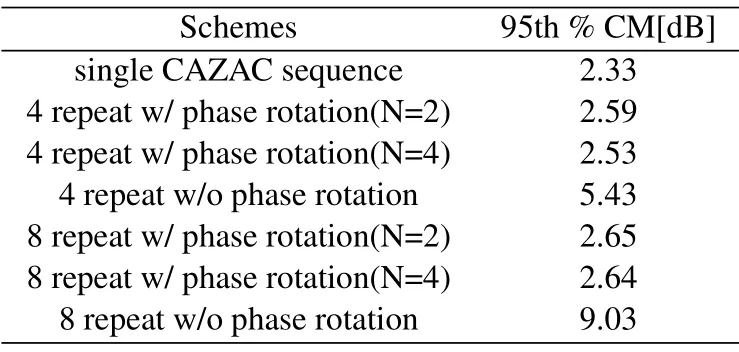
Table 1. CM performance of the vary schemes.
Figure 9 shows that the CM values of 4/8 repetition with phase rotation schemes are lower than that of 4/8 repetition without phase rotation schemes,whose CM values are similar to that of single CAZAC sequence copy.For repetition 4/8 cases, the CM performance gains are 2.9dB and 6.4dB respectively.Figure 10 shows that CM performance is comparable whether the phase rotation step isπ(i.e.N= 2) or(i.e.N=4).
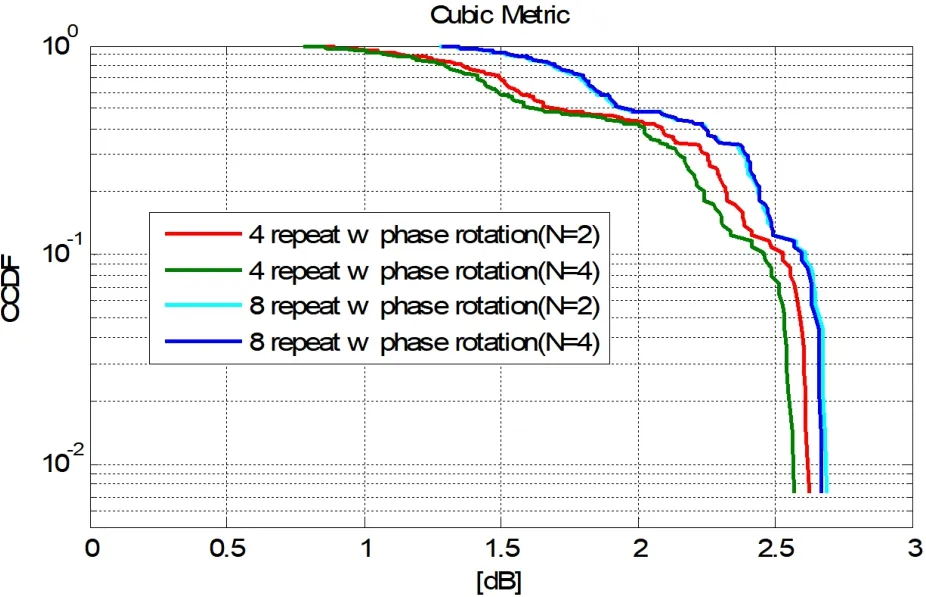
Figure 10.PRACH CM performance of the vary schemes(stepsize).
The procedure of the PRACH detection algorithm are given as follows:
Step 1:the time domain received signal is transformed to frequency domain by FFT;
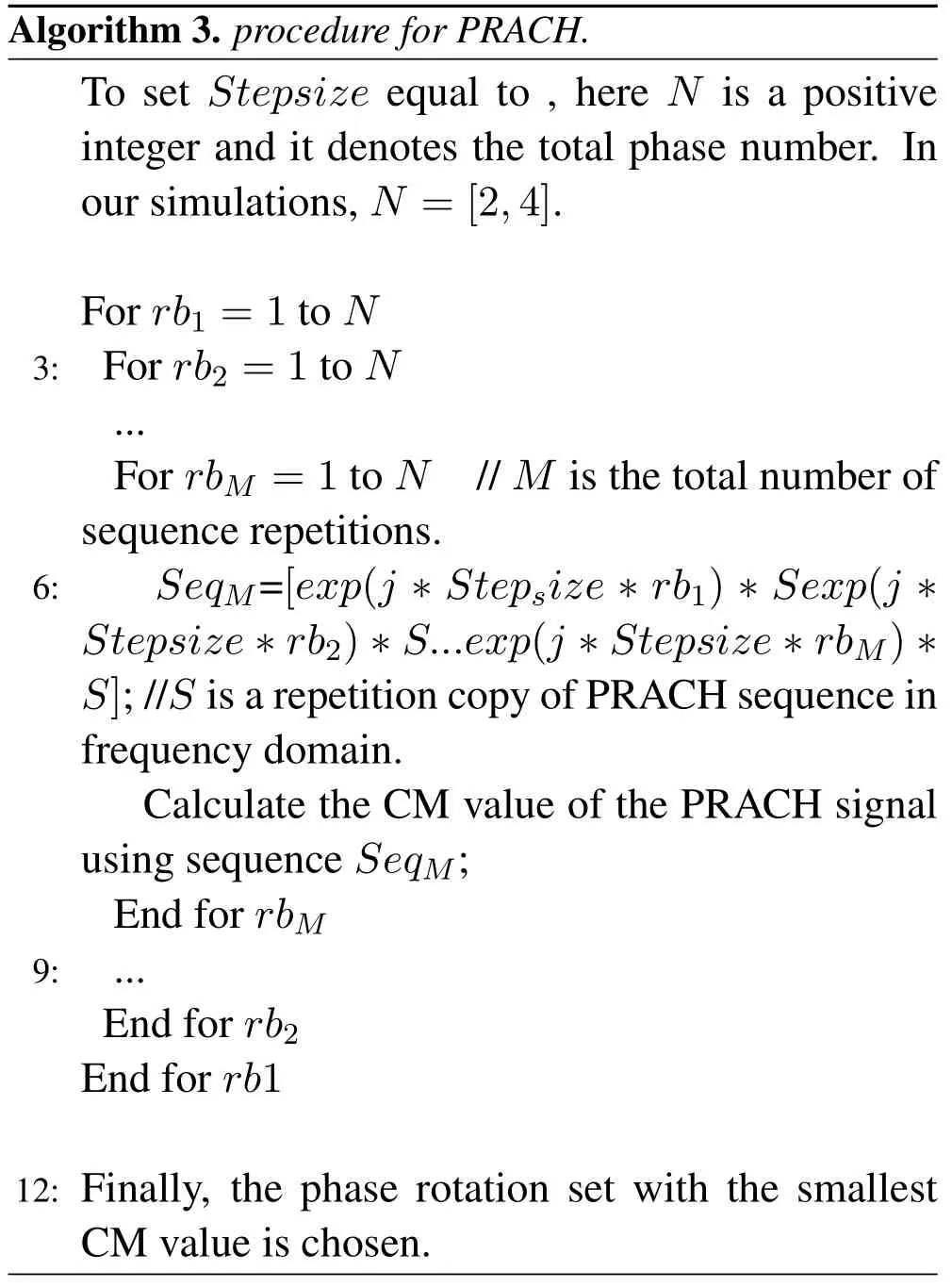
?
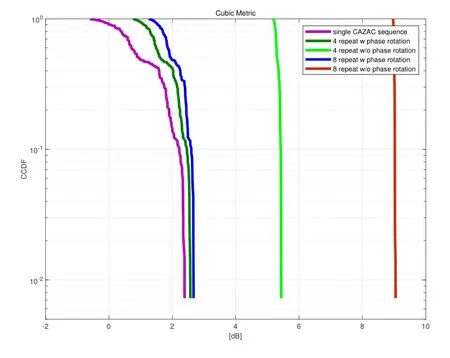
Figure 9. PRACH CM performance of the vary schemes(w vs.w/o).
Step 2:the frequency domain receiving signal is correlated with the 64 hypothetical preamble sequences to get the channel estimation in frequency domain;
Step 3:since the same phase rotation value are applied across the each whole repetition copy, the receiver can easily detect the phase offset as part of the composite channel and compensate it in the equalization process;
Step 4:the frequency domain channel estimation coefficients for each preamble sequence hypothesis are transferred to time domain by IFFT to get the power delay profile;

Where,Y(n)is the frequency domain received signal,andXu(n+l)is the root sequence of preamble in frequency domain;
Step 5:for each preamble sequence hypothesis,subtract the PDP samples in a window duration with different start position related toNcsand the index of the candidate sequence with the same root index, the number of samples depends onNcsand IFFT length;
Step 6:The time domain sample with the maximum power in the window duration is compared with a certain threshold to make sure the false alarm probability of PRACH less than or equal to 0.001 when input is only noise.
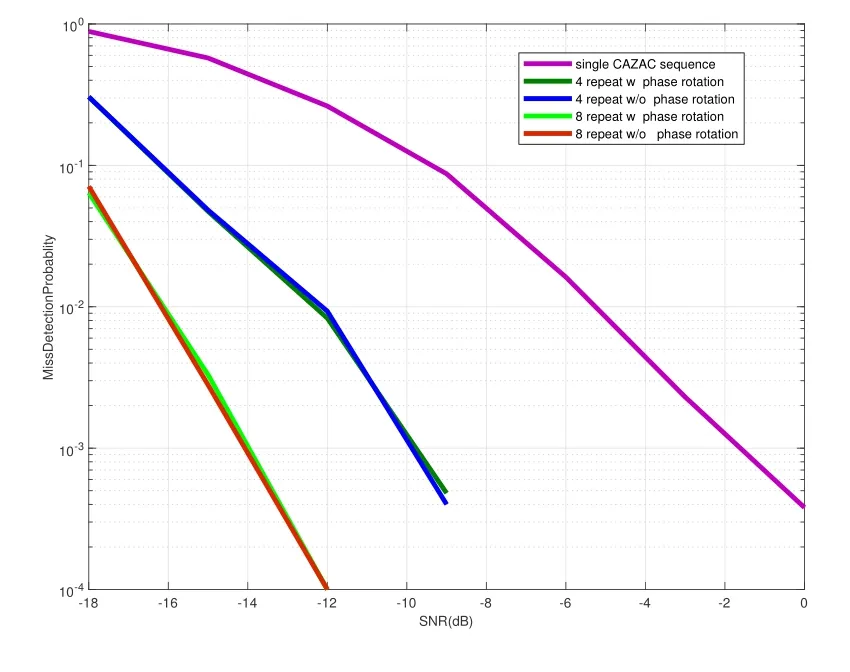
Figure 11. PRACH miss detection probability of vary mapping manner(N=4).
−If there is at least one sample in the window is greater than the threshold,Time Advance(TA)is estimated based on the location of the maximum sample in the window.If the TA is less than half of the normal CP, the preamble is determined as transmitted.
−If none of the samples in the window is larger than the threshold, or the TA is greater than half of the normal CP, the preamble is determined as not transmitted.
For the miss detection probability,Figure 10 shows that a 4/8 repetition sequence with phase rotation has the same performance as 4/8 repetition sequence without phase rotation, which has 6.4dB and 10.4dB gain than a single CAZAC performance when false alarm probability less than or equal to 0.001 for 4 and 8 repetition scheme respectively.
Figure 12 shows that all curves are not exceed 0.001,which means that all the schemes have controllable false alarm probability.
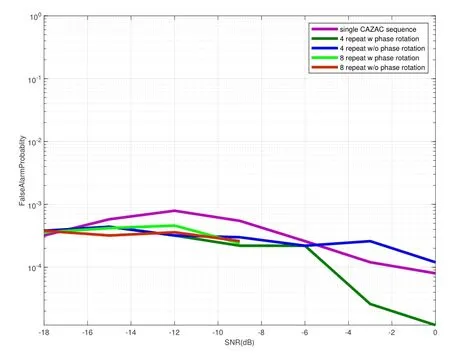
Figure 12.PRACH false alarm probability of vary mapping manner(N=4).
Figure 13 shows the timing estimate error for various schemes with different repetition times (4 or 8 repetitions)and with/without different phase rotation.The 4/8 repetition with phase rotation is almost the same performance as 4/8 repetition without phase rotation.Moreover,the repetition cases have better performance of the timing estimate error than that of single CAZAC sequence case.
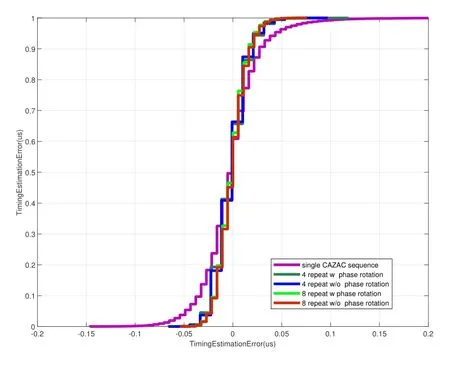
Figure 13. PRACH timing estimate error of vary mapping manner(N=4).
From Figure 9 - 13, we can observe that the phase rotation schemes have better performance of miss detection probability/false alarm probability/timing estimate error than that of single CAZAC sequence and these schemes have a good balance between implementation complexity and CM performance.
VI.DISCUSSION
Based on the above simulations, we can see that CM values of NR-U channels, PRACH and PUCCH, can be significantly reduced to an appropriate level by properly selecting the appropriate phase rotation or cyclic shift of the sequence (the cyclic shift is also equivalent to phase rotation.).At the same time,these schemes can guarantee the properties of the auto-correlation and cross-correlation of the CAZAC sequence, and ensure the detection performance of the channels.Hence we can conclude that these schemes are a type of distortionless-based CM reduction schemes and they meet the design principles mentioned in section IV.
6.1 CM Reduction Schemes for PUCCH
Regarding the scheme Alt-a for PUCCH,it was found that some base sequences have the same optimum cyclic shift permutation,and the optimum cyclic shift values for 10 PRBs have a step size with 12 co-prime.The cyclic shiftSnused on thenthPRB in an interlace resource is determined as

where,∆is the cyclic shift step size,andnis the number of RBs in an interlace resource.
Simulation results show that if ∆is co-prime with 12, the low CM properties of this method is maintained, which means the step sizes can be selected from the sets of{1,11}and{5,7}.Taking step size 5 as an example,10 cyclic shifts mapped on each PRB of an interlace resource are{4,9,2,7,0,5,10,3,8,1}respectively.It was also found that the step sizes of{1,5,7,11}can be used for all the 30 base sequences with trading off the complexity and CM performance.For the scheme Alt-b for PUCCH,it was found that the CM value of phase rotation with 10 candidate phases is the smallest, but the complexity is higher.And it’s hard to find a simple mathematical representation since there is no obvious mathematical law for these phases.
Therefore, the the scheme Alt-a is a better chose for PUCCH of NR-U.The optimization details for the scheme Alt-a include that the cyclic shift for each PRB can be denoted asSn=(α0+∆∗n)mod12.Where,α0is the cyclic shift determined according to the parameter configured by gNB and slot and OFDM symbol number, ∆is the step size, which can be chosen from{1,5,7,11}, andnis the PRB number in one interlace,ranging from 0 to 9.
6.2 CM Reduction Schemes for PRACH
For PRACH, it was found that the schemes of 4 or 8 repetitions with phase rotation have lower CM values.The phase rotation combinations with each entry selected in 4 and 8 phases are uniformly distributed in (−π,π], and the phase rotation combinations with the lowest CM can be selected by greedy algorithm as described above.We finally got very concise and symmetric phase rotation vectors,andwhich is a length-4 set and length-8 set.The first vector is used for the 4-repetitions case and the second vector is used for the 8-repetitions case,respectively.And they have the following characteristics.
For the 4-repetitions case,whereN=2,
• the four repetitions have two different phase rotation values;
• the phase relationship step size is;and
• the first three repetitions have the same phase rotation value, or the last three repetition has the same phase rotation value.
For the 4-repetitions case,whereN=4,
• the four repetitions have two different phase rotation values;
• the phase relationship step size is;and
• the first repetition has the same phase rotation value as the last one, and the middle two repetitions have the same phase rotation value.
For the 8-repetitions case,whereN=2,
• the eight repetitions have two different phase rotation values;
• the phase relationship step size is;and
• the second repetition has the same phase rotation value as the third, or the sixth repetition has the same phase rotation value as the seventh.
For the 8-repetitions case,whereN=4,
• the eight repetitions have three different phase rotation values;
• the first repetition has the same phase rotation value as the last one;
• the most middle two repetitions have the same phase rotation value;
• the rest repetitions have the same phase rotation value;and
• there is a phase relationshipbetween the first two repetitions, while a phase relationshipπbetween the first repetition and the fourth repetition.
The complexity of the repetition schemes with the phase rotation is very low since only one phase rotation value is taken in a whole repetition of sequence,meanwhile the CM values are similar as that of the legacy PRACH sequence.
We also observe that the repetition schemes with phase rotation have better detection performance than that of single CAZAC sequence repetition,while their CM performance is at the same level.In addition,the receiver can easily detect the phase offset since the same phase rotation step is applied across each whole copy of repetition.The proposed CM reduction schemes for PRACH is a real good balance between complexity and CM performance.
VII.CONCLUSION
In this paper, we mainly discuss serious CM issues of CAZAC sequence-based PRACH and PUCCH of NR-U in 5G system.Based on the properties of CAZAC sequences used for PRACH and PUCCH(refers to PUCCH format 0 and format 1),we propose new schemes of CM reduction considering the design principles to ensure the sequence performance of the auto-correlation and cross-correlation for CAZAC sequence-based PRACH and PUCCH.The simulations demonstrate that the proposed schemes can effectively reduce CM value, and they also have lower implementation complexity.Next,these schemes need further research and optimization,and to carry out the work on standardized protocols.
- China Communications的其它文章
- An Overview of Wireless Communication Technology Using Deep Learning
- Relay-Assisted Secure Short-Packet Transmission in Cognitive IoT with Spectrum Sensing
- Frequency-Hopping Frequency Reconnaissance and Prediction for Non-cooperative Communication Network
- Passive Localization of Multiple Sources Using Joint RSS and AOA Measurements in Spectrum Sharing System
- Specific Emitter Identification for IoT Devices Based on Deep Residual Shrinkage Networks
- Primary User Adversarial Attacks on Deep Learning-Based Spectrum Sensing and the Defense Method

